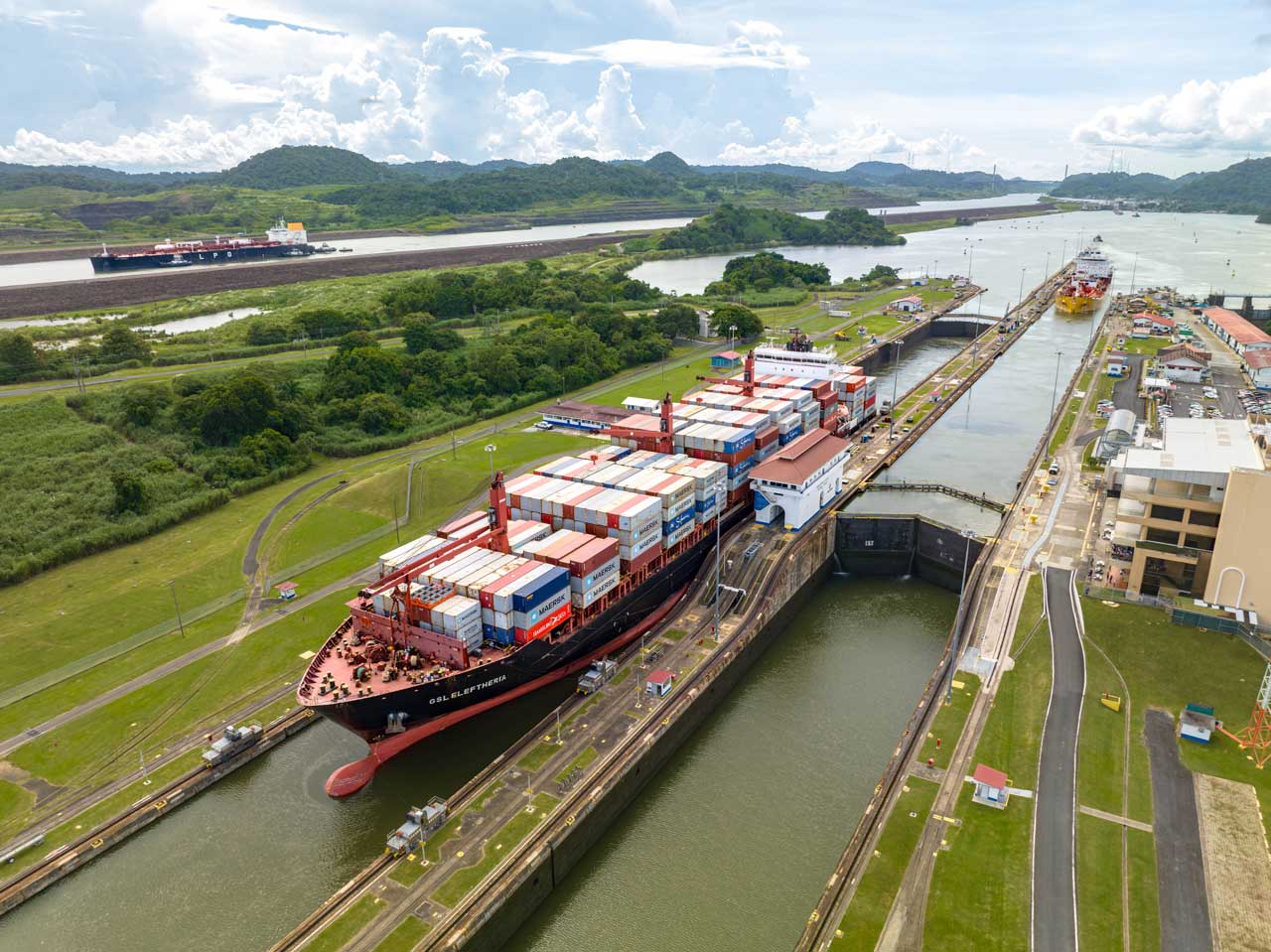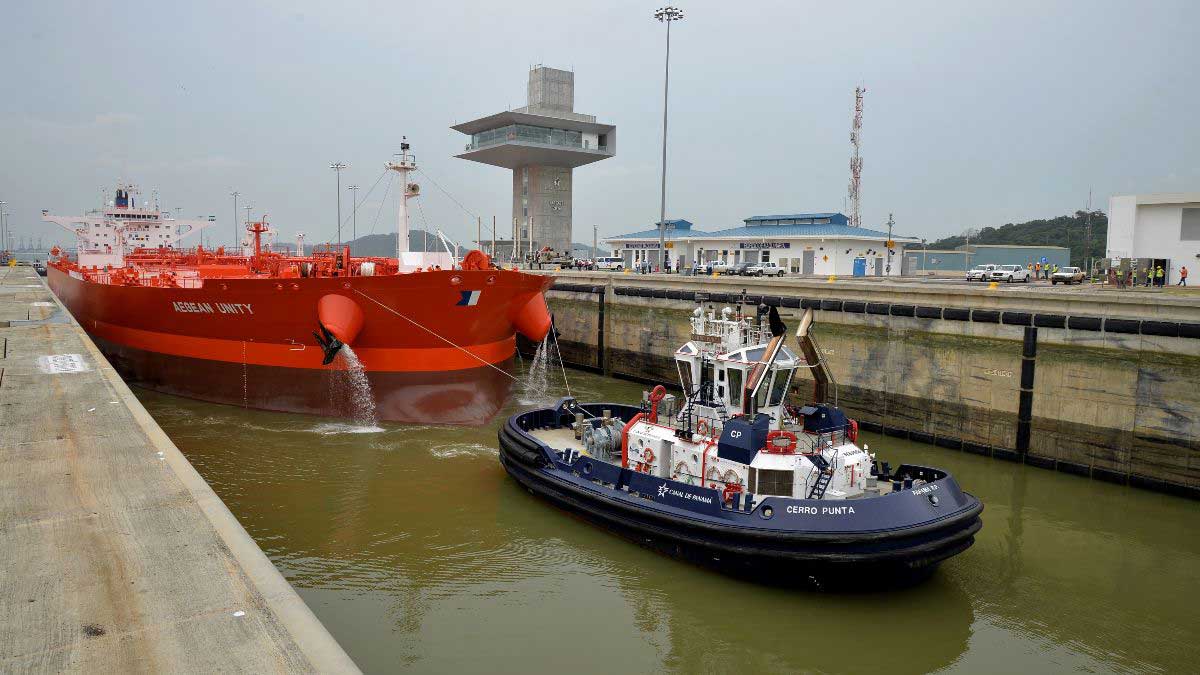Panama, August 24, 2001 – Reference is always made to the Canal as a route of transit at the service of the world, but… How do the Republic of Panama and its people benefit from it? With the transfer of the waterway to Panamanian hands on December 31, 1999, the Panama Canal Authority was completely incorporated into the national economy. Its productivity is measured by the sales of transit services to vessels, and is registered in accordance with the total volume of Panama Canal net tons that transit the waterway. The benefits correspond to the direct and indirect contributions to the National Treasure and other indirect contributions to the country.
Title XIV of the Political Constitution of the Republic of Panama establishes the Panama Canal Authority as a profit-making institution and stipulates payments to the National Treasure. The direct contributions to the Treasure comprise: tolls by net ton, dividends or net profits, and public services. The indirect contributions to the Treasure include the payments for income tax, Social Security tax, and the Educational Insurance tax. It must be emphasized that the annuity paid by the U.S. administration of the Canal until the first quarter of fiscal year 2000, from October to December 1999, was included in the payments for public services.
The operations of the Canal also produce an indirect economic flow for the country through the generation of jobs, the payment of salaries, and the purchase of goods and services from local suppliers. The Canal provides potable water to the cities of Panama and Colon, promotes tourism activities, and contributes to the development of the national maritime sector. Other indirect contributions include the training of professionals, environmental protection and education, and the advancement of communications systems.
The benefits enjoyed by the U.S. citizens who worked for the Panama Canal before December 31, 1999, were reconverted and included in the payment per net ton to the National Treasure. That contribution increased from US$0.39 per net ton, collected from the vessels that paid tolls during the U.S. administration, to US$0.65 per net ton during the Panamanian administration. This represented an increase in earnings from US$88.9 million in fiscal year 1999, to US$134.6 million, in fiscal year 2000, that is, an additional income of US$45.7 million for the National Treasure. For fiscal year 2001, it is estimated that there will be an increase in the payment per net ton to US$151.8 million, and it is foreseen that for fiscal year 2002 the amount will increase to US$154.1 million.
The Canal operations provide benefits to the State through the payment of dividends or net profits. These profits are generated when Canal revenues exceed the cost of operation, investment, and modernization, and are transferred to the Republic of Panama. The net profit corresponding to fiscal year 2000 was US$37.5 million, as compared to US$29.2 million, the amount for fiscal year 1999. A reduction of US$17.5 million in net profits is anticipated for fiscal year 2001, due to modernization costs. However, it is estimated that, as a result of the improvements, Canal operations will generate a net profit of US$43.7 million for the National Treasure in fiscal year 2002.
The payments for public services in the Canal operating and housing areas represent another direct contribution to the National Treasury. These services include security, fire department, road maintenance, road illumination and cleaning, traffic control, and garbage collection. They also include payments for auditing services to the Office of the Comptroller General of the Republic, and to the Entity for the Regulation of Public Services for operating the electric power market of the Canal and for the use of communication bands. The Canal paid US$26.5 million for services corresponding to fiscal year 2000. It is estimated that the contributions for public services will increase to US$29 million in fiscal years 2001 and 2002.
The total direct contributions from the Canal to the National Treasury increased to US$201 million in fiscal year 2000, as compared to US$138.1 for the previous year. This represented an additional income of US$62.9 million, or a 31 percent increase. It is estimated that there will be a slight decrease to US$198.2 million in fiscal year 2001, as a result of an increase in the investment program, including the modernization projects. In fiscal year 2001, the Canal will invest US$198.3 million, as compared to the estimated US$164.4 million for fiscal year 2000. However, it is foreseen that the direct contributions to the National Treasury will amount to US$226.9 million in fiscal year 2002.
The Panama Canal has increased its financial contribution to the country, as reflected in the direct payments made to the National Treasury. The Panamanian people are the beneficiaries of the Canal activities, its owner, and main shareholder. To the extent in which the Canal remains efficient and competitive, its revenues will be comparable and, so will its contribution to the country’s economic wealth.




